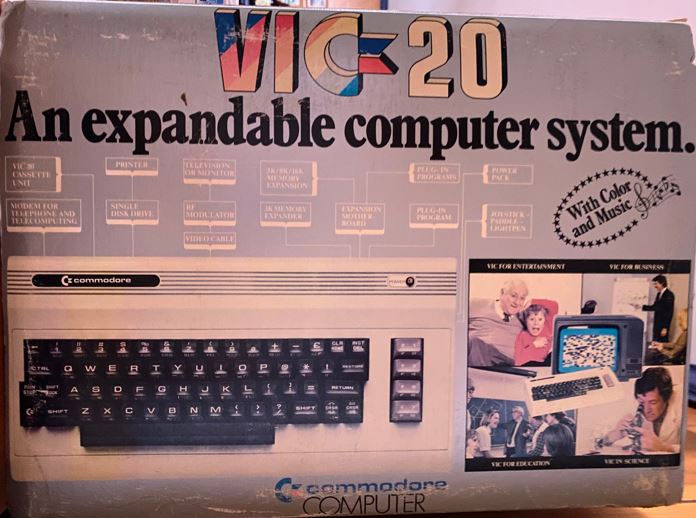The Commodore VIC-20 was a pioneering home computer that played a pivotal role in popularizing personal computing in the early 1980s. Released in 1980, it was one of the first affordable home computers on the market, retailing for just $299.95 – a fraction of the cost of competing systems at the time.
Technical Specifications and Capabilities
At its core, the VIC-20 was powered by a MOS Technology 6502 microprocessor running at 1.023 MHz, which was considered a respectable speed for its time. It came equipped with a modest 5KB of RAM (expandable to 32KB), but its real technical marvel was its impressive video capabilities. The VIC-20 featured a MOS Technology VIC chip that allowed it to display 16 colors with a resolution of 176×184 pixels – a significant step up from the monochrome displays common on contemporary home computers.
One of the VIC-20’s standout features was its robust sound capabilities, powered by a SID (Sound Interface Device) chip that could produce three-voice synthesized sound with programmable waveforms, envelopes, and filters. This made the VIC-20 a popular choice for early chiptune music and rudimentary game audio.
Importance in the Home Computer Market
The VIC-20’s low price point and impressive multimedia capabilities for its time were instrumental in driving the growth of the home computer market. Prior to the VIC-20, personal computers were primarily seen as expensive hobbyist devices or business machines. The VIC-20’s affordability and user-friendly design made it accessible to a broader consumer audience, paving the way for widespread adoption of home computing.
Commodore’s savvy marketing strategy also played a significant role in the VIC-20’s success. The company positioned the computer as a versatile entertainment and educational device, bundling it with instructional manuals and encouraging third-party software development. This approach helped showcase the VIC-20’s potential and fostered a thriving ecosystem of games, productivity software, and educational programs.
Popular Software Titles
Despite its limited memory and processing power, the VIC-20 amassed an impressive library of software titles spanning various genres. Some of the most popular games and applications included:
- Scott Adams’ Adventure Games: These text-based adventure games, such as “Pirate Adventure” and “Voodoo Castle,” were among the first commercially successful titles for the VIC-20.
- Jupiter Lander: A simple yet addictive game that challenged players to safely land a spacecraft on the surface of Jupiter while managing fuel and velocity.
- Gorf: An arcade-style shoot-’em-up game that combined multiple genres, including a Space Invaders-like section and a mission to destroy an enemy spacecraft.
- Omega Race: A fast-paced, vector-based racing game that demonstrated the VIC-20’s impressive graphics capabilities.
- VisiCalc: One of the earliest and most popular spreadsheet applications, which helped establish the VIC-20 as a viable productivity tool.
- Programmers Aid: A versatile programming utility that allowed users to write, edit, and debug BASIC programs, fostering a community of hobbyist programmers.
While overshadowed by more powerful computers in later years, the Commodore VIC-20 played a crucial role in democratizing home computing and igniting the imaginations of a generation of users. Its impact on the industry cannot be overstated, as it paved the way for the widespread adoption of personal computers in homes across the world.

